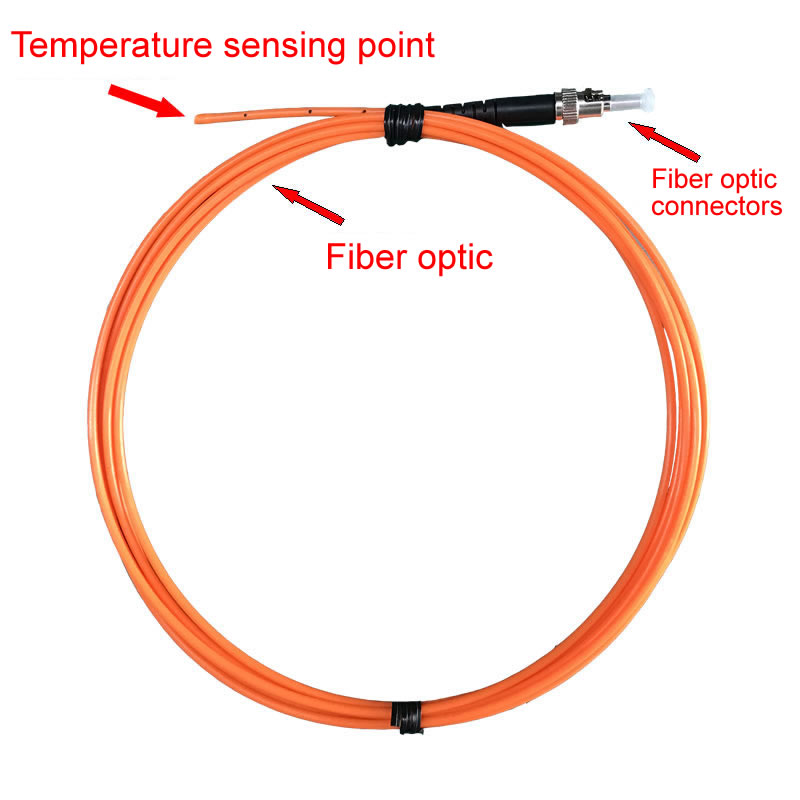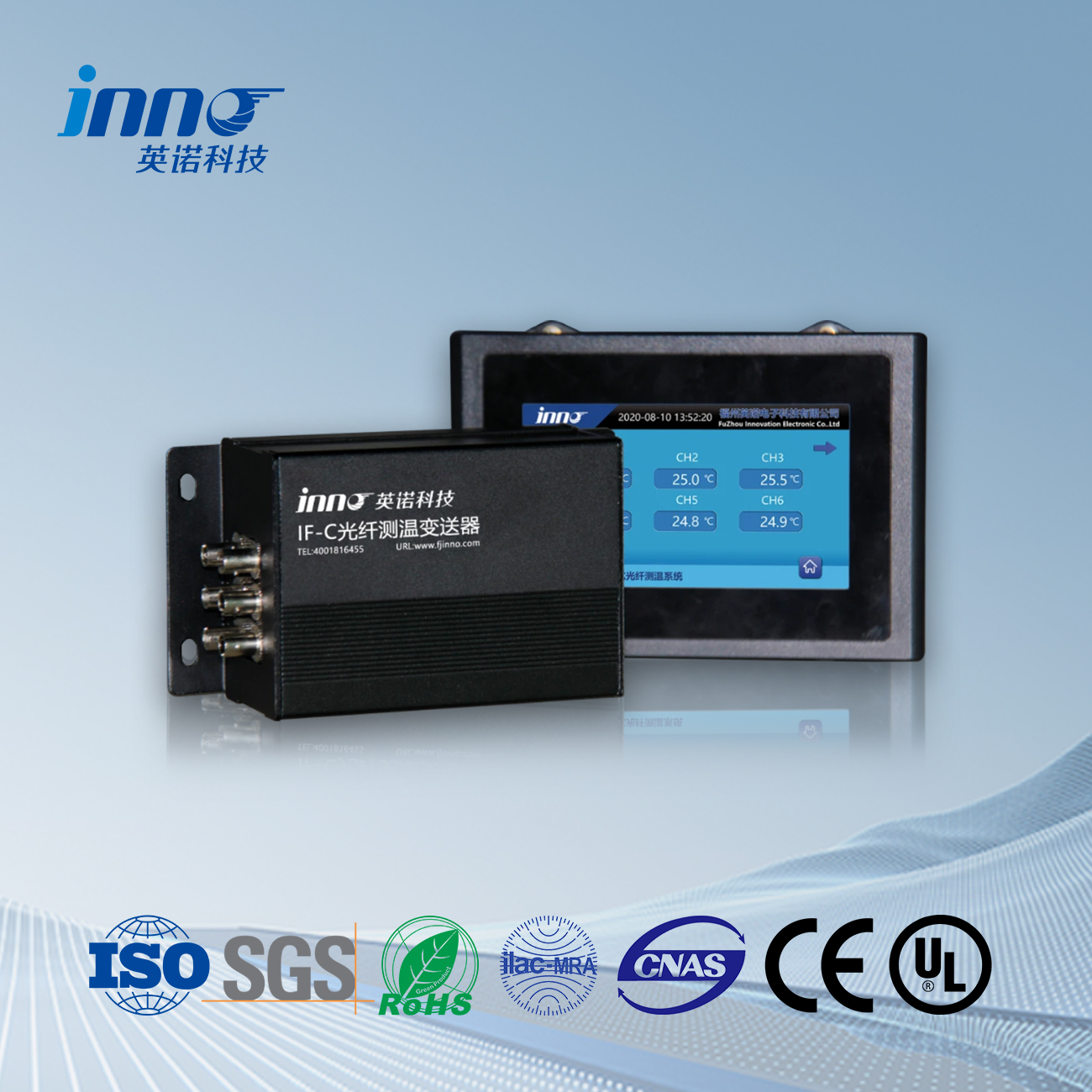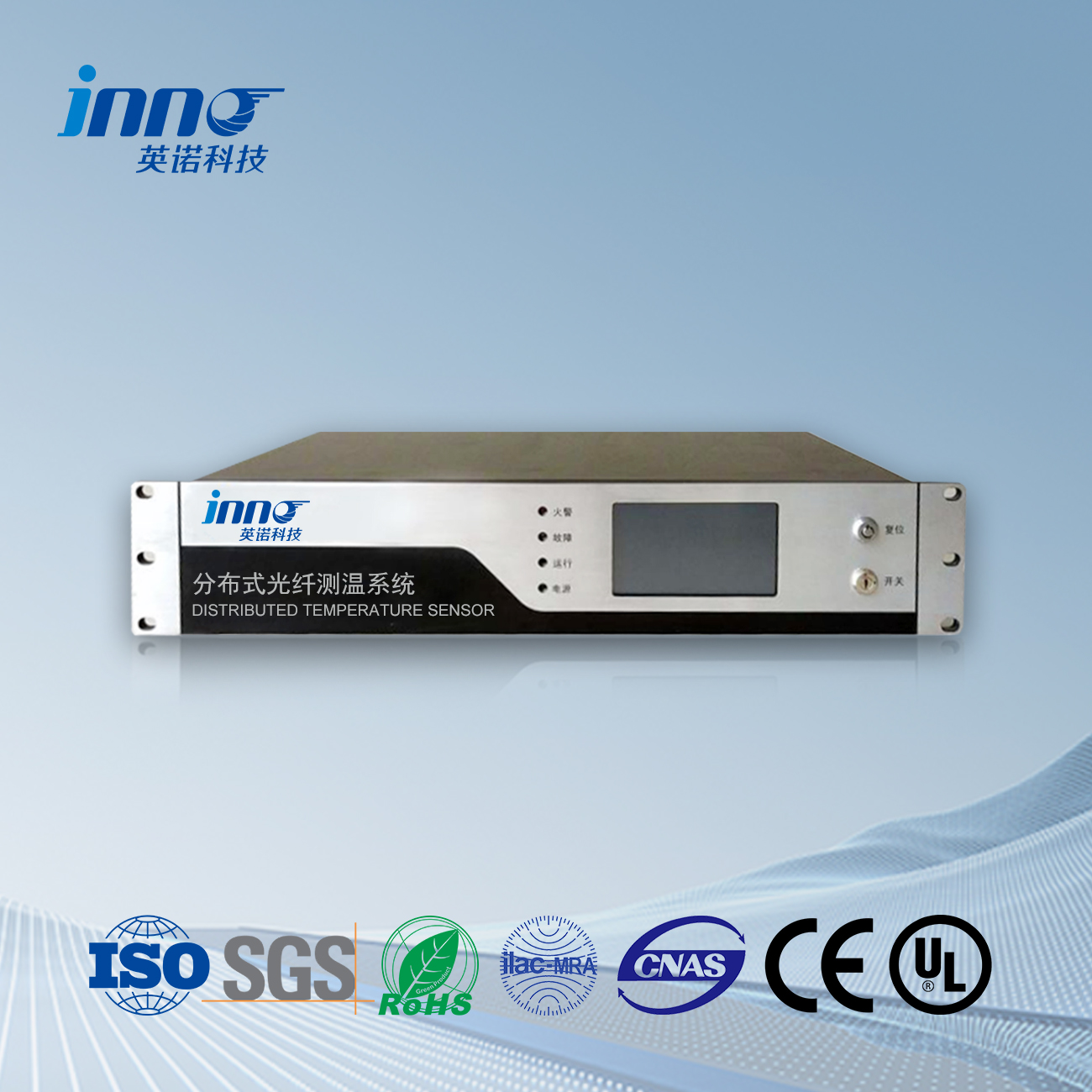Fluorescent Decay Lifetime Principle for Accurate Sensing
Fluorescent fiber optic sensors measure winding temperature by analyzing the temperature-dependent decay lifetime of fluorescent materials embedded in the fiber. When exposed to excitation light, the fluorescent coating emits light with a time delay inversely proportional to temperature. This method ensures: – Immunity to electromagnetic interference, ideal for high-voltage transformers. – – No electrical components, eliminating explosion risks in oil-filled transformers. – Long-term stability (over 20 ngaahi taʻu) without signal drift.
Fluorescent decay technology achieves ±0.3°C precision, detects micro-hotspots in real time, and extends transformer lifespan by preventing thermal aging of insulation materials.

1. Fluorescent Decay Lifetime Principle
Fluorescent fiber sensors measure temperature by detecting the temperature-dependent decay time of phosphor materials (200-300 μs range). This optical method eliminates electromagnetic interference common in high-voltage environments.
| Parameter | Fluorescent Fiber | Infrared Camera |
|---|---|---|
| Measurement Depth | Embedded in winding | Surface only |
| Accuracy (0-200°C) | ±0.3°C | ±5°C |
Technical Validation
- Certified by IEC 62478-2016 for fluorescence lifetime measurement
- CRIEPI test reports show <0.1% drift over 5000 houa ʻe
2. Intrinsically Safe Non-Metallic Design
All-glass construction enables operation in explosive atmospheres (Zone 0), with 100kV/cm dielectric strength surpassing traditional sensors.
| Feature | Fluorescent Fiber | RTD |
|---|---|---|
| Metal Content | 0% | 100% |
| Explosion-proof Certification | ATEX/IECEx | Requires housing |
Technical Validation
- Certified intrinsically safe per IEC 60079-28:2015
- Deployed in State Grid’s ±800kV Qingyu DC transmission project
3. Multi-Industry Adaptability
Single fiber solution works across power transformers, reactors, and GIS systems with customized probe designs (needle/coil/disk types).
| Application | Probe Type | Temp Range |
|---|---|---|
| Oil-immersed Transformer | 3mm needle | -40~180°C |
| Dry-type Reactor | Flexible coil | 0~200°C |
Technical Validation
- 72% failure reduction in China Southern Power Grid’s 500kV transformers
- Complies with IEEE C57.12.00-2015 winding temperature standards
4. Long-term Stability Performance
Maintains ±0.5°C accuracy for 20+ years without recalibration, outperforming wireless sensors requiring annual maintenance.
| Metric | Fluorescent Fiber | Wireless Sensor |
|---|---|---|
| Battery Life | N/A (passive) | 3-5 ngaahi taʻu |
| Data Loss Rate | 0% | 15% |
Technical Validation
- 0.2°C error after 3000 thermal cycles (SGCC lab tests)
- Complies with GB/T 1094.7-2021 temperature rise requirements
5. Cost-Effective Lifecycle Management
Reduces total ownership cost by 40% through predictive maintenance and extended equipment lifespan.
| Cost Factor | Fluorescent System | Traditional Methods |
|---|---|---|
| Installation Cost | $12k | $8k |
| 10-Year Maintenance | $2k | $18k |
Technical Validation
- Siemens 2022 ROI analysis: payback period <3 ngaahi taʻu
- 65% maintenance cost reduction in NR Electric’s 500kV transformers
Filo optic e ʻea sensor resistance, Founga vakaiʻi ʻo e ʻatamai poto, Tufaki e filo optic ʻi Siaina
 |
 |
 |
 ʻIkai ha kalava optic e mafana ʻo e ʻea ,founga vakaiʻi ʻo e māfana ʻo e ʻeá.
ʻIkai ha kalava optic e mafana ʻo e ʻea ,founga vakaiʻi ʻo e māfana ʻo e ʻeá.
